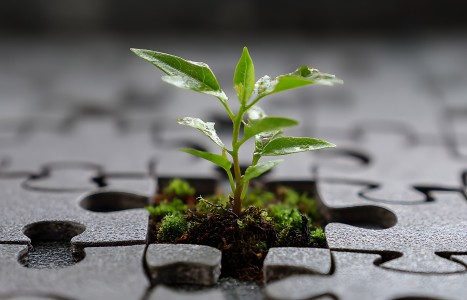When we talk about fertility, the focus is often placed on the ovaries and the uterus. Yet sperm-related factors contribute to nearly half of all cases of infertility. Whether someone is navigating fertility care alone or with a partner, and whether building a family through intercourse, IVI, IUI or IVF, it’s vital to include sperm health in the picture.
Healing With That Ethnic Dash
Aaaaah, that smells like home, sighed my Croatian buddy, Dee C., when I applied the anti-inflammatory, nonsteroidal gel to her back after I had selected basic acudots and qi moves to help ease her sport-related torso twist. Popular in Europe, this particular anti-inflammatory is actually a Swiss product I tote with me everywhere because of its soothing ability to reduce pain. In Dee's case, acupressure plus the gel worked like a charm. The change in her qi was instant. I took the precaution of referring her to my chiropractor for a follow-up, as Dee is a buddy, not a formal client.
Dee's reaction prompted me to poll a global range of friends and colleagues for more examples of remedies that remind them affectionately of their childhood. I always advise my graduates (acupuncture and ABT) to engage a client in discussions about her/his childhood memories of ethnic remedies. It's a great diagnostic tool offering snippets of information about the past to weave into – or avoid – in a creative treatment plan.
For Tess J., a British buddy in the U.S., the comforting dash is Vicks VapoRub – not my trusted anti-inflammatory gel! Once I had selected some key acupoints to help release her lower back pain (UB 21, 22, 23, 36, GB 34, including footwork and gentle pressure on Liv 2,3).

She said, "Pam, can you please add a dab of Vicks to your hands when you work those points?" Once I explained the process of easing stagnant or blocked qi, Tess said she wanted the fragrance of Vicks, and not only to enhance qi flow.
"Vicks always reminds me of home, warmth and safety. Our Mum would rub it on our chests to ease coughs, colds and congestion!" she explained as I paced her through very subtle qi moves and stretches before applying acupressure.
As I was raised by a British mother, I could relate 100 percent to Tess. I'm never without a jar of Vicks, especially when traveling. I ended the session by showing Tess some gentle pressure-and-release techniques using the palm of her hands along any part of the GB or UB meridians she was able to access easily. The key here was to share some simple techniques she could do for herself using Vicks on the days after I left.
Ukrainian-born Alighta Averbukh, LAc, of Austin, Texas, remembers valerian root tea for nervousness and chamomile to calm an upset stomach during her childhood. She continues to use these remedies today and share them with clients. Raised in a Jewish household, she emphasized "chicken soup clear broth" as being "good for everything." Alighta also mentioned a tablespoon of apple cider vinegar to a quarter teaspoon of baking soda for indigestion. Amusingly enough, I recently used a cup each of the same products (though white vinegar, not apple cider) to unblock a clogged bath drain!
Alighta and others I polled in Austin, like Texan and Venezuelan-raised Suzanne Rittenberry, LAc, also praised another popular use for Vicks: rubbing it on the soles of the feet before pulling on socks. Equally good for babies!
The Joy of Local Herbs
Isabelle Chen-Angliker, MD (Switzerland), LAc, AOBTA(r)-CP, practices integrative medicine in Austin, and spoke eloquently about her deep love of Swiss alpine remedies reflecting her childhood.1 Isabelle trained as a pediatrician in Zurich before completing acupuncture and tuina training at AOMA. She praised topical herbs for ointments to promote wound healing such as calendula, plantain and yarrow; or salves with arnica for sprains.
"Hang garlic and oranges spiked with cloves in the bedroom for common colds, and use onion wraps for ear infections," she said. Popular herbal teas include slippery elm or tussilago for coughs, sage and thyme for sore throats, elderberry, echinacea, or lemon balm with fresh-squeezed lemon juice for the common cold.
Isabelle recognized overlaps during her additional training in Chinese herbs; for example, cloves (Ding Xiang) to warm the interior and expel cold, or sage root (Dan Shen) to move congestion, clear heat and nourish blood. During her childhood, Isabelle's grandmother treated a cough with a special syrup that formed a day after she placed a couple of brown sugar cubes inside a hole cut in a large white radish!
Renal transplant clinical manager Bernadette Winiker, RN, of Austin recalled her own nursing experience in Switzerland when they would place a flask of rose hip tea at the bedside of patients experiencing urinary infections, or chamomile tea at the bedside of patients with stomach upsets. Both Bernadette and Isabelle, of course, grew up within Switzerland's long tradition of krauterheilkunde, herbal healing, and corner pharmacies offering an array of herbal concoctions along with packaged remedies.
Yet More...
Brazilian-born Elizabete Gomes, LAc, RN, also of Austin, was raised close to Brasilia in rural, semi-tropical, central-interior Brazil amid high plains and rolling hills. With great love. Elizabete described a tasty paste mix of egg yolk, turmeric, butter and honey for coughs; and a heartburn remedy of blended and strained juices of parsley and collard greens.
She added, "My Mom made us chew papaya seeds every few months as a natural anti-parasite!" Yes, she recommends such remedies to her clients in her group practice, and prepared them for her family and especially her nieces when they were growing up.
Palestinian-born chef Abir Saadeh also remembered the comfort of chamomile or sage tea for stomach aches, "and anise (yansoun), equally good for insomnia" The popular herbal mix of Za-atar to flavor a variety of dishes is also useful as a cough remedy. Both Abir and the late Jerusalem-born Zuhdi Tarazi remembered the fingertip pressure their grandmothers would apply to their foreheads for headaches.
Spanish Texas
Tomas Rodriguez, Austin-based artist and former bilingual teacher, recalled the potency of herbal remedies from his childhood in the Rio Grande valley, used by his family and recommended by the local curandera. Remedies included applying marijuana leaves soaked in alcohol for arthritis or muscular pain.
He described pressing a paste of orange tree leaves and lard to the forehead to relieve pain. He added, "A garlic clove placed on a tooth relieved pain, and the gel of aloe vera was a perfect salve for cuts and burns." Tea made of corn silk was sipped for urinary problems; chamomile tea for gas and heartburn.
And Finally...
A sobering note from Yuxia Qiu, LAc, who recently moved her practice from New York City to Sedona, Ariz.,where she enjoys Bell Rock hiking and meditating daily. Yuxia remembers the way her family boiled vinegar to fill the entire room with steam to prevent flu, and claims she never had flu as a child. She also mentioned the ancient Chinese way of burning Cang Zhu to purify a room to prevent flu. Could it also play a role in preventing transmission of the coronavirus? This still requires in-depth research.
Reference
- "One Doctor's Experience: Isabelle Chen-Angliker, MD, LAc." N Amer J Oriental Med, 2016;23(68).



